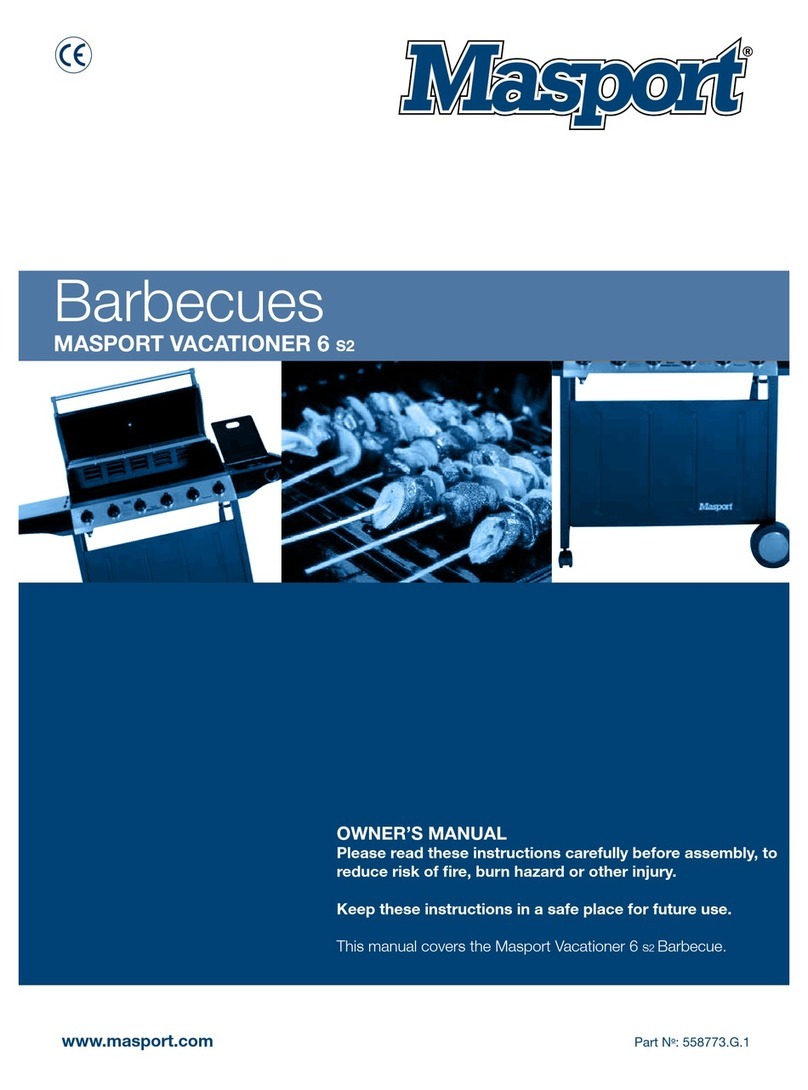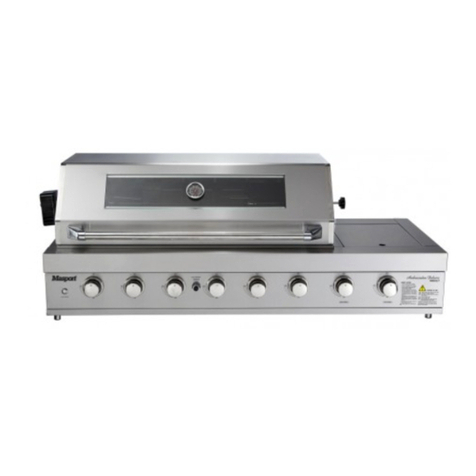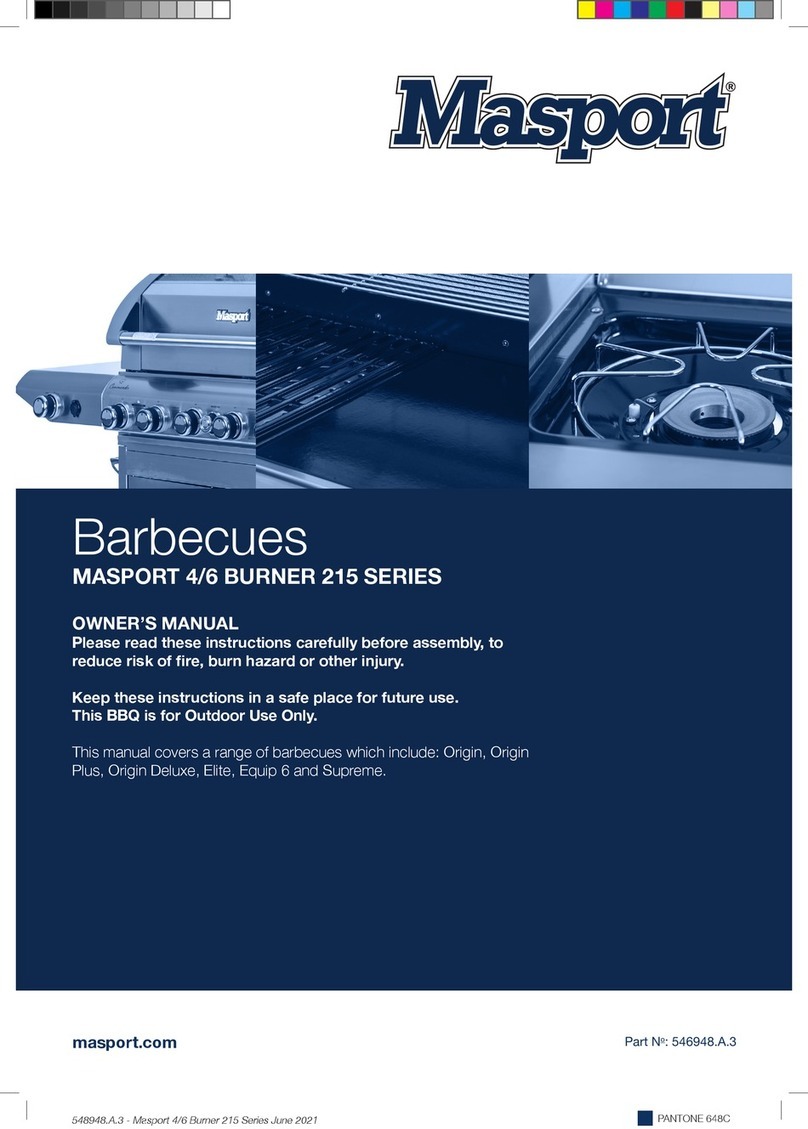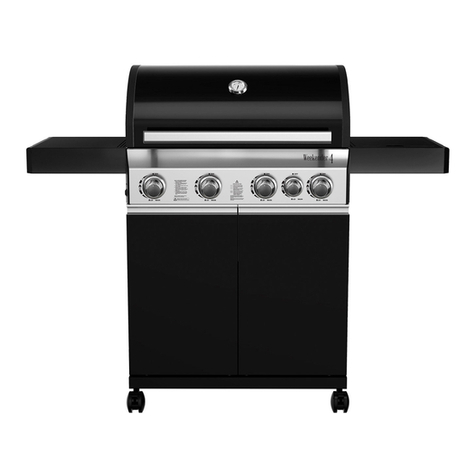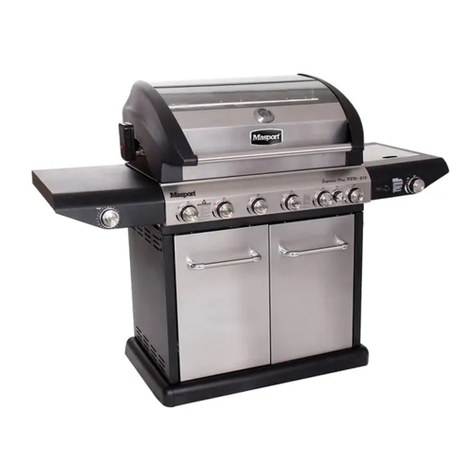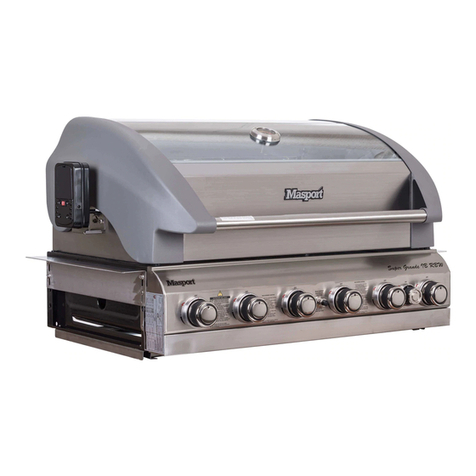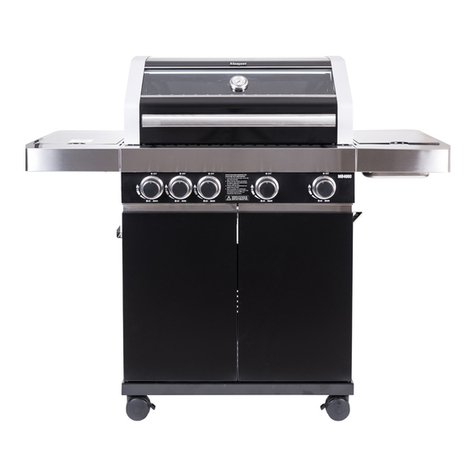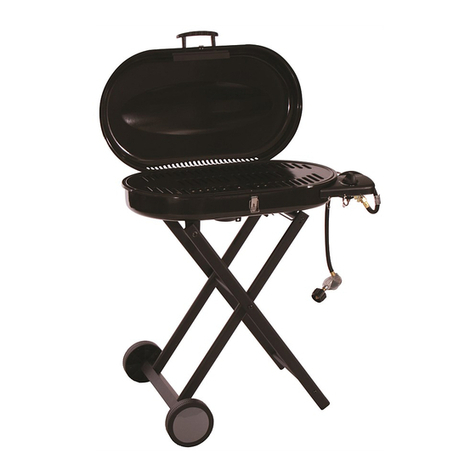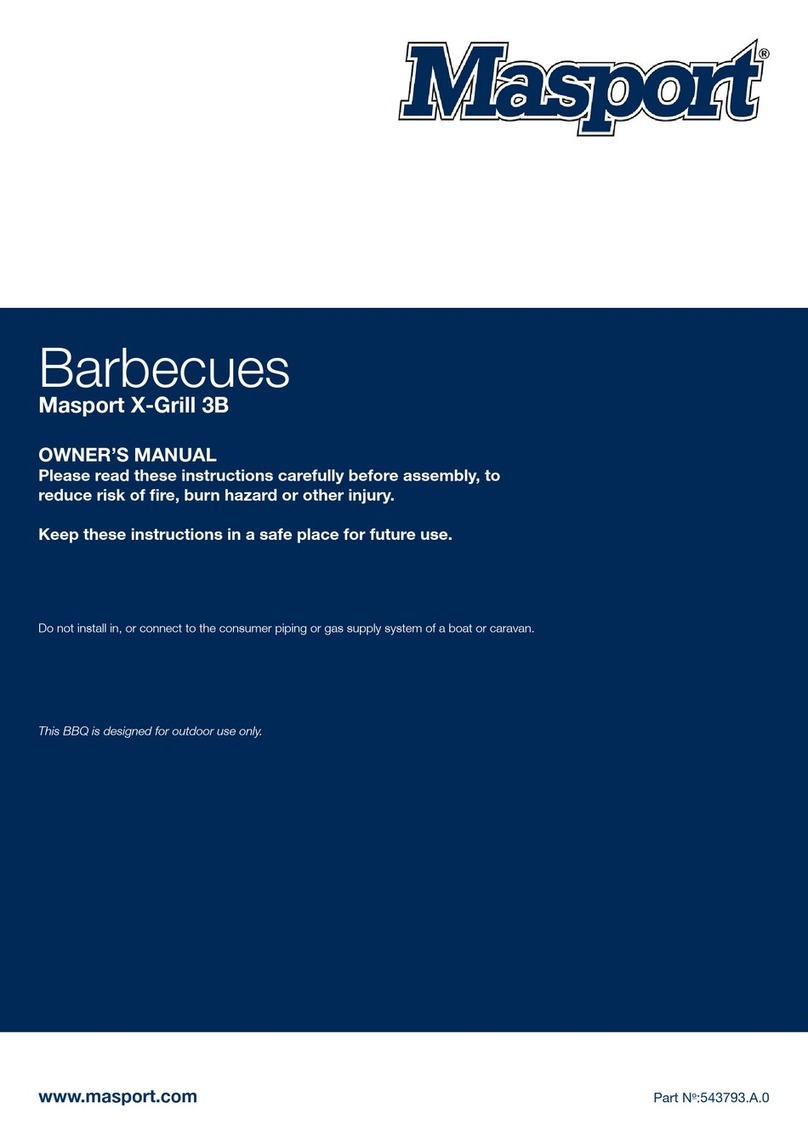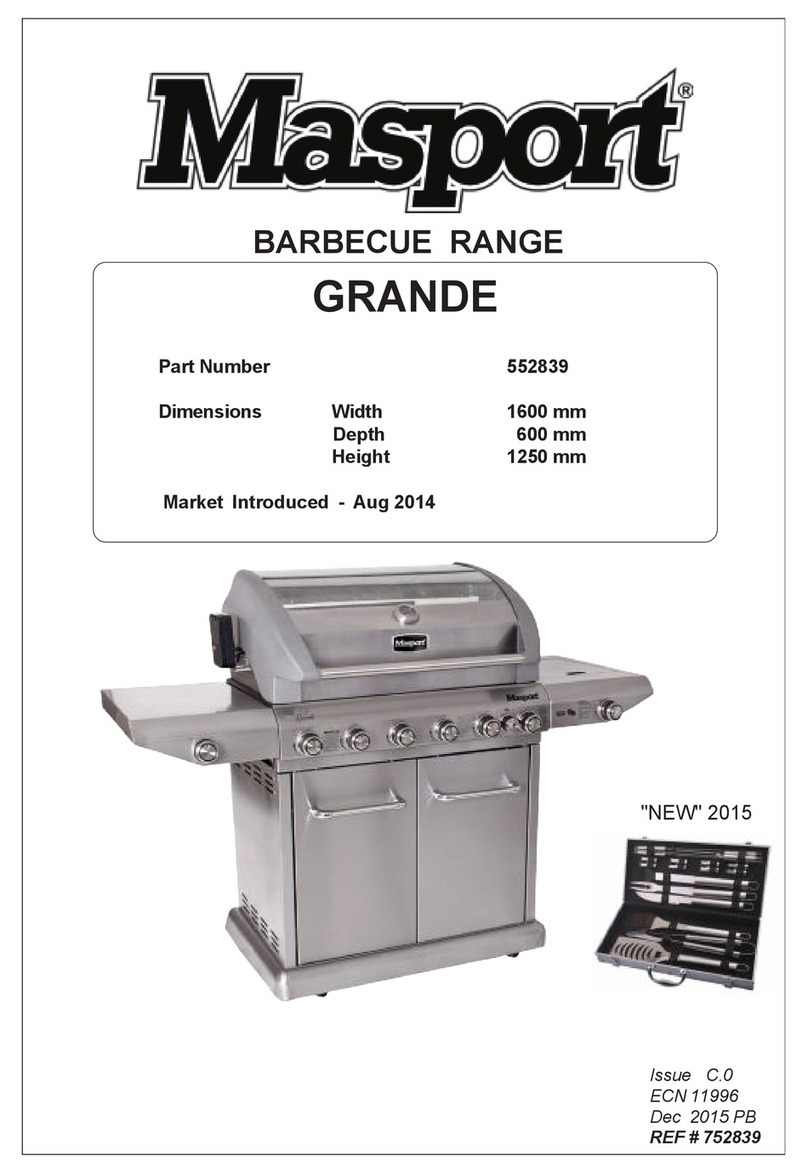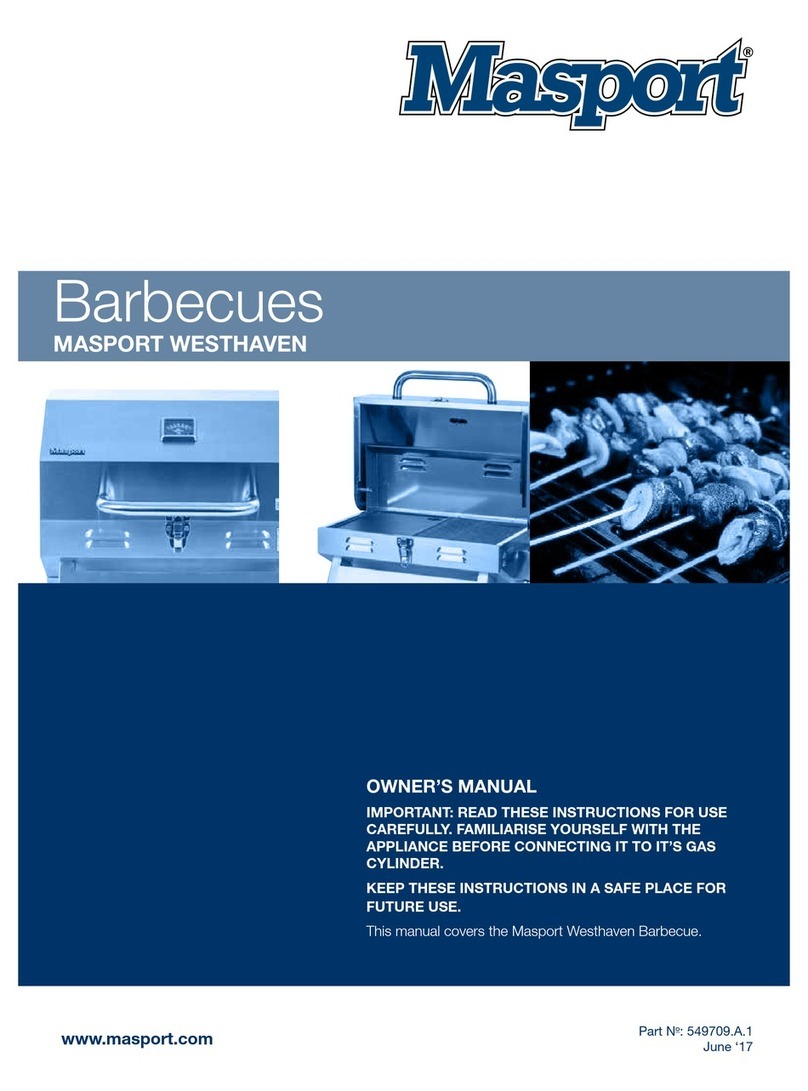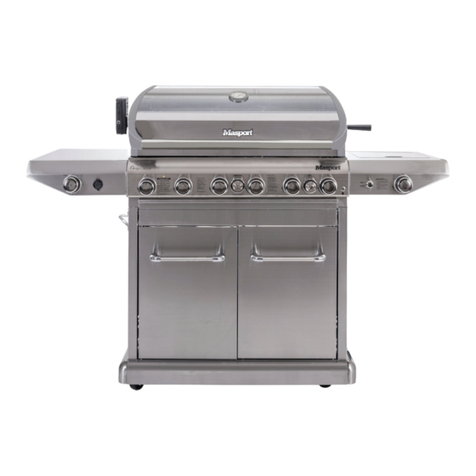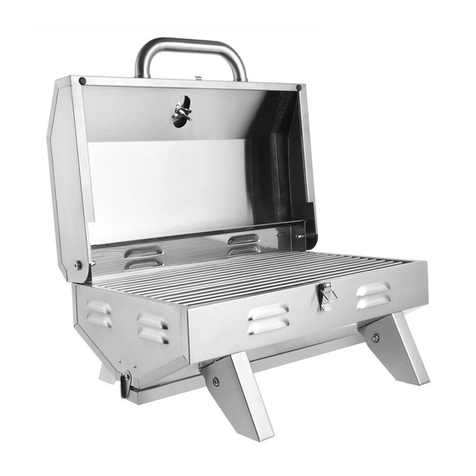32
Contents
SAFETY AND WARRANTY
INFORMATION .............................................................................2
PARTS - LIFESTYLE BARBECUES............................................4
ASSEMBLY INSTRUCTIONS - LIFESTYLE BARBECUES ......... 5
PARTS - MAESTRO BARBECUES............................................11
ASSEMBLY INSTRUCTIONS - MAESTRO BARBECUES ........12
ROTISSERIE ASSEMBLY INSTRUCTIONS ..............................18
INSTALLATION...........................................................................20
LEAK TESTING ..........................................................................21
OPERATION ...............................................................................21
CARE AND MAINTENANCE......................................................24
TECHNICAL DATA .....................................................................26
TROUBLESHOOTING ................................................................27
Safety and Warranty
Information
Keep the instructions in a safe place for future use.
DO NOT OPERATE THIS BBQ BEFORE IT HAS BEEN
ASSEMBLED CORRECTLY AND YOU HAVE READ AND
UNDERSTOOD THESE INSTRUCTIONS.
These instructions are intended as a general guide and do
not supersede national or local codes in any way. Contact
local authorities for clarity of laws relating to the operation
of this appliance.
SYMBOLS IN THIS OWNER’S MANUAL
Possible hazard or hazardous situation.
Not observing this instruction can lead to injuries or
cause damage to property.
Important information on proper handling.
Not observing this instruction can lead to faults in
the BBQ.
User information. This information helps you to use all
the functions correctly.
Failure to follow these instructions could result in fire or
explosion which could cause property damage, personal
injury or death.
Accessible parts may be very hot. Keep young children away
from the hot appliance at all times (even while cooling down).
Some parts of this grill may have sharp edges especially as
mentioned in this manual! Wear suitable protective gloves if
necessary.
Assembled parts sealed by the manufacturer must not be
altered by the user. Any modification of the appliance by
unauthorised persons may be dangerous.
IMPORTANT SAFETY INFORMATION
Please read and understand this manual fully before assembly and
use.
• The Manufacturer’s Warranty may be voided by the incorrect use
of this product.
• The Manufacturer or their Agents can accept no liability for the
unsuitability of, or any damage to, food that is cooked on this
appliance.
• Use the correctly specified fuel with this barbecue. Check with
your dealer for the specific fuel for which this barbecue has been
designed.
OWNER’S MANUAL
• The operator must understand all the safety requirements detailed
in this manual before using the barbecue.
• If you have any queries regarding these instructions, contact your
local dealer for clarification before you use your barbecue.
• The unit must be correctly assembled before use. Failure to follow
the manual’s instructions could result in serious damage or injury.
PERSONAL SAFETY
• The use of alcohol, prescription or non-prescription drugs may
impair the consumer’s ability to properly assemble or safely
operate this barbecue.
• The barbecue should be carefully checked for operational use
every time before use.
• Never try to move the barbecue when it is on, or before it has had
time to cool down.
• The person operating this barbecue should pay constant attention
to the food being cooked.
• Do not leave the barbecue unattended when it is alight. The
person should remain at the barbecue at all times when it is
alight/cooking.
THIRD PARTY SAFETY
• The operator is responsible for the safety of all third parties while
the barbecue is in use.
• Onlookers should be kept a safe distance away from the
barbecue when it is in use.
• Keep children and animals well away while the barbecue is in use
and while it is cooling down.
LOCATION
• Do not use indoors. Barbecue units are designed for OUTDOOR
USE ONLY.
• Use in a weather-protected area, preferably under shelter.
• Ensure that the barbecue is on an even and secure surface before
operating. Use the castor locks if fitted to lock the wheels in
place.
• Do not use within one metre of any flammable surface of
structure.
BURN AWARENESS
• Parts of the barbecue do get extremely hot and could cause
serious burns – touch test the surface before applying a firm grip.
• The hood handle can become hot! The use of cooking gloves and
long sleeves are advised.
• If cooking with the hood closed, be very careful opening the hood,
a sudden rush of hot air could burn an unprotected arm.
GAS AWARENESS
• Ensure all gas couplings and hoses are in good condition and
have been correctly fitted.
• Leak test all gas lines and connections before use.
• Do not store flammable materials near this barbecue.
• Do not place the gas bottle underneath the barbecue directly.
• Do not store spare LPG cylinders under or near this barbecue.
• Do not place or use aerosols near this barbecue.
• Do not store or use gasoline or other flammable vapours or liquids
in the vicinity of this barbecue.
• Ensure that the gas is turned OFF at the cylinder after use and
while the barbecue is unattended.
• When turning off the barbecue, shut off the gas at the supply
source before turning off all the burner controls.
• Do not store gas cylinders below ground level. ULPG is heavier
than air. Should a leak occur, the gas will collect and could ignite
due to presence of a flame or electric spark.
FOR YOUR SAFETY AND OTHERS
If you smell gas:
• Shut off the gas supply to the barbecue.
• Extinguish any open flame (candles, cigarettes, etc.)
• Clear the area to allow the unburned gas to dissipate.
Be aware of the reason for the gas smell, address this before
continuing. Should the gas odour come from the LPG cylinder,
immediately contact the fire department from an elevated safe
distance.
Connecting the gas cylinder to the barbecue, refer to that section in
the manual.
Leak testing, refer to that section in the manual.
SAFETY EQUIPMENT
When cooking with oil/grease, fire extinguishing materials should be
readily accessible.
In the event of an oil/grease fire do not attempt to extinguish with
water or alcohol. Use type BC dry chemical fire extinguisher or
smother the fire with dirt, sand or baking soda.
RAIN HAZARD
In the event of rain while cooking with oil/grease, turn off the gas
supply and all burners, cover the barbecue as soon as possible.
Move people/animals away from around the barbecue. Do not
attempt to move the barbecue until it has cooled and can safely be
moved.
INSTALLATION
This Cooking Appliance is For Outdoor Use Only and
shall not be used in a building, garage or any other enclosed
area.
NOTE!
Read carefully the pages containing the parts and assembly
before assembling your gas grill.
THE LOCATION FOR YOUR GRILL
Do not use your gas grill in garages, porches, breezeways, sheds
or other enclosed areas. Your gas grill is to be used outdoor only, at
least 43cm from the back and side to any combustible surface. The
grill should not be placed under any surface that will burn. Do not
obstruct the flow of combustion and ventilation air around the grill
housing. Keep this barbecue away from any flammable materials!
(Refer to page 20).
GAS AND REGULATOR INFORMATION
Gas grills are used safely by millions of people when following
simple safety precautions. This barbecue is designed for ULPG
use only. Bottle size of 4.5kg or greater is recommended for use
with this barbecue. The regulator must have an outlet pressure of
2.75kPa. You must have the correct regulator and bottle for the
barbecue to operate safely and efficiently. The items used in the fuel
system are designed for operation with the grill.
(See parts list for replacement items).
WARRANTY
Refer to the warranty supplied with this BBQ. Should any part fail
due to defective workmanship or faulty materials within the specified
period from the date of purchase, Masport will replace or repair the
defective part free of charge. Refer to the warranty for details. Do
not use a BBQ that is unsafe.
LPG CYLINDER
The cylinder manufacturer/distributor is responsible for the safety
and performance of the LPG cylinder. This is not included in the
Masport BBQ warranty. Do not use a cylinder that is unsafe.
DISPOSAL OF PACKAGING
Remove all protective packaging including any protective film from
stainless steel surfaces.
Make sure you properly dispose of, or recycle the packaging
material where possible to comply with applicable waste disposal
laws in your area.
IMAGES
Lifestyle 3
Lifestyle 4
Maestro
